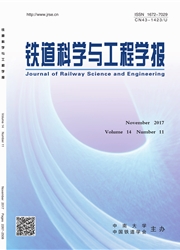

 中文摘要:
中文摘要:
目前,国内建筑物在不断地超高层化以及超大型化,使得钢结构厚板的应用越来越广泛。厚度增大导致焊缝焊接热影响增大,同时焊缝的缺陷敏感性也相对更加显著,这些因素使得钢厚板焊缝韧性性能变差,特别是在低温环境中更加明显。因此,有必要研究钢厚板对接焊缝的低温冲击韧性。对150 mm厚钢板对接焊缝进行了低温下的冲击韧性试验研究,结果显示焊缝区和热影响区的冲击韧性均随温度降低而降低,而且热影响区的冲击韧性沿板厚度方向随表面到中心的位置变化而降低,这和母材的规律一致,但数值相对母材有所降低。同时,利用Boltzm ann函数对试验结果进行拟合分析,得到其韧脆转变温度及变化规律。试验结果表明:钢结构特厚板对接焊缝有较明显的低温脆性特征,要引起足够重视。
 英文摘要:
英文摘要:
Within buildings becoming higher and larger continuously,steel thick plate is used more and more widely.Thickness increase leads to the increase of heat-affect,and the sensitivity of weld defects is also relatively more significant,which causes the weld toughness performance of steel thick plate to get worse,especially in the low-temperature environment.Therefore,it is very necessary to study the impact toughness of weld of steel thick plate.This paper carried out an experimental study on the impact toughness of butt weld of 150 mm thick plate at low temperature,and the results show that the impact toughness of them reduces with the temperature reducing,and that of heat-affect zone also reduces with the position changing from the surface to the center along the thickness direction,variation of which is the same as steel thick plate itself,but value relatively decreases.The paper also gives a regression analysis with Boltzmann equation,obtaining the ductile-brittle transition temperature of weld area and heat-affect zone under different conditions and its variation.Test conclusions indicate that butt weld of thick plate of steel structure has clear brittle features,which must be paid sufficient attention to.
 同期刊论文项目
同期刊论文项目
 同项目期刊论文
同项目期刊论文
 期刊信息
期刊信息
